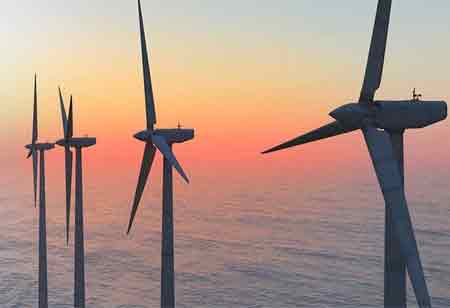Thank you for Subscribing to Energy Business Review Weekly Brief
Effective Solutions for Combating Climate Change and Building a Sustainable Future
Climate change mitigation necessitates strategies like emission reduction, renewable energy promotion, forest replanting, sustainable agriculture, climate adaptation, policy reform, and public awareness.

By
Energy Business Review | Monday, September 02, 2024
Stay ahead of the industry with exclusive feature stories on the top companies, expert insights and the latest news delivered straight to your inbox. Subscribe today.
Climate change mitigation necessitates strategies like emission reduction, renewable energy promotion, forest replanting, sustainable agriculture, climate adaptation, policy reform, and public awareness.
FREMONT, CA: Climate change is the most critical challenge facing us today, considering its consequences for ecosystems, economies, and societies worldwide. Hence, a movement on technological innovation, policy reforms, and lifestyle changes has to be driven to lessen the impact of climate change and adjust to its consequences. The following section will review some vital solutions that can help fight climate change toward a sustainable future.
To combat climate change, the world must reduce greenhouse gas (GHG) emissions by transitioning to renewable energy sources like solar, wind, and hydroelectric power. These technologies have negligible environmental impacts compared to coal, oil, and natural gas. Energy efficiency improvements in buildings, transport, and industry can also significantly reduce energy use and emissions. Home appliances, insulation, and electric vehicles contribute to reduced carbon footprints.
Reforestation and afforestation are equally important in the strategies against climate change. Trees form the primary source of carbon dioxide absorption from the atmosphere, compensating for emissions. Extensive tree planting and restocking of degraded forests can enhance carbon sequestration while at the same time underpinning biodiversity and water cycles. Protection from deforestation and degradation of existing forests is equally important because it secures the carbon sink capacity, often of vital ecosystems.
The climate-smart agriculture—Zero tillage, cover cropping, agroforestry, and reduced food loss/waste—would help in the low-emission and climate-smart pathway by avoiding associated greenhouse gases in agriculture and soil health but would also require a land-use approach that limits land expansion to meet sustainable food demands. This will achieve a low-emission and resilient food system by reducing food loss/waste.
The second key component of this solution is the adaptation to the impacts of climate change. The communities will have to invent ways of adapting to these extreme weather conditions, sea-level rise, and other climate changes. This shall call for resilient infrastructures, such as flood defenses, drought-resistant water systems, and early warning systems to save lives and property from disasters. Also, resilience can be enhanced by urban planning that provides for green space, has sustainable drainage systems, and uses building construction techniques that are resilient to climatic change.
Further progress on climate action needs policy action at all levels and requires international cooperation. Whereas only governments are uniquely positioned to set ambitious reduction targets, support research and development of green technologies, and enforce environmental legislation, the Paris Agreement seeks to join forces among countries to contain the increase in global temperatures and help developing countries to adapt to and mitigate the effects of climate change. Setting focal political wills with collaborative approaches is called for if the goals set by the international climate are to be reached.
This involves public awareness and behavior change. Citizens can do their part by engaging in sustainable activities, saving energy, switching to renewable energy, and living eco-friendly. Other contributions include advocating for collective action and influencing policy decisions through education.






